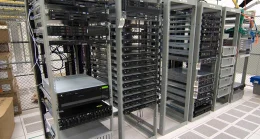Relocating a UPS System or Generator To A New Location
There are times when it is necessary to relocate a UPS system or generating set including moving within a building or to a completely new location. As with critical power related installation, removal or relocation should be considered as a project and be properly managed. Generator relocations typically follow the same project format as that for a UPS system with the added complexities of fuel storage and connection.
Generator and UPS Site Surveys
The first stage for a generator or UPS relocation project is to asses both the existing and the new site. A new site inspection may well be the easiest place to start and especially if this is a new build server room or datacentre. As with any UPS installation the basics should be covered including:
- Logistics and delivery permits
- Handling into position
- Electrical connection works
- Battery pack connection and battery builds
- UPS commissioning
- Network IP/SNMP monitoring and Emergency Power Off (EPO) connections
- Maintenance access, contracts, preventative schedule and emergency call out numbers
The best way to plan a UPS installation or relocation is to use a method statement. Some UPS manufacturers and suppliers have generic methods statements. These can be useful but for a specific UPS relocation should be used as a basis from which to generate a site-specific Risk Assessment and Method Statement or RAMS document as it is sometimes known.
Relocation Risk Assessments and Method Statements (RAMS)
RAMS document as commonly used within project management for a wide variety of industries and projects. The point of the document is to identify any risks, allocate them a risk severity and then to provide information on how the risk is to be controlled and mitigated. This can include people, processes and equipment for example. It is normal for a risk assessment and method statement to be reviewed by more than one person and for sites involving a client and contractor by parties from both sides.
To complete a RAMS document for a generator or UPS relocation requires both sites to be reviewed if the document is to cover the entire process. The next stage in the process is to review the existing UPS site itself from where the uninterruptible power supply will be taken.
Generator or UPS Relocation Checklist
For a current location, the site survey order includes:
- UPS decommissioning
- Battery isolation and disconnection
- Electrical disconnection and making-safe
- Handling, repacking and removal from site
- Logistics and removal permits
- Remote Monitoring disconnection and implications
- Maintenance contract and emergency call-out details update
UPS and Generator Decommissioning
It is very important to safely decommission a generator or UPS system. This involves completely powering down and making-safe both the UPS and connected battery packs that may also be moved during the relocation process.
The batteries within a UPS and its battery extension packs store energy and even when disconnected from the mains power supply and UPS itself, still have a stored reserve of power than can lead to potential electric shocks and burns.
UPS manufacturer recommendations should be followed and the decommissioning and making safe performed by a suitably qualified UPS and/or electrical engineer. To make a UPS and battery pack safe may involved removing battery fuses and tripping breakers into the ‘OFF’ position. Only then can a UPS and its battery packs be safely disconnected from its electrical installation. Care should be taken if the UPS is connected to a remote monitoring system and emergency power off to ensure that disconnection of the network or communications cables does not trigger unplanned events elsewhere within the building.
When decommissioned the UPS system can be disconnected from its electrical installation. The electrical works themselves may also require being made safe. This is not just to make sure that no-one is exposed to any live terminals but also to ensure that no non-approved equipment is connected. The making-safe process here will require a suitably qualified electrical contractor or electrician and will involve terminating cables, distribution isolation, secure access controls and new labelling. On-site documents including maintenance logs and asset registers may also require disconnection.
Decommissioning a generating set will require making sure certain items of the set are safe and secure. This may involve removing or disconnecting from any fuel storage facilities, isolating any electrical breakers and securing any items that could move during transit.
Whether you are looking to relocate single-phase or three-phase UPS system, the same areas of concern arise. With the right level of planning it is possible to decommission and move a UPS to its new location within a working day but only for nearby locations and assuming that nothing goes wrong. Many issues can arise with a UPS relocation if the project is not properly planned and executed. The older and larger the UPS equipment the more likely there is for damage during the removal process. This is truer for a poorly or never maintained UPS system than it is for one that has been routinely maintained and inspected annually. Older systems may be weaker purely due to the length of time they have been working within their current environment and wear and tear could lead to a build up of potential issues that are only exposed when the UPS is moved from its current location to a new one. It is the decommissioning and removal process itself that leads to potential unreliability and for this reason it may be better in the interests of resilience and reliability to limit UPS relocations to UPS systems that are less than 10 if not five years old.
For a quotation or project review for your UPS system or generating set relocation please contact the Server Room Environments project management team.


























